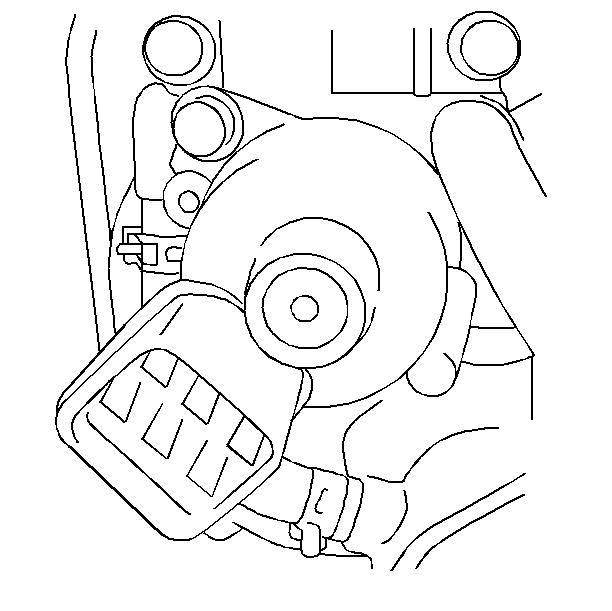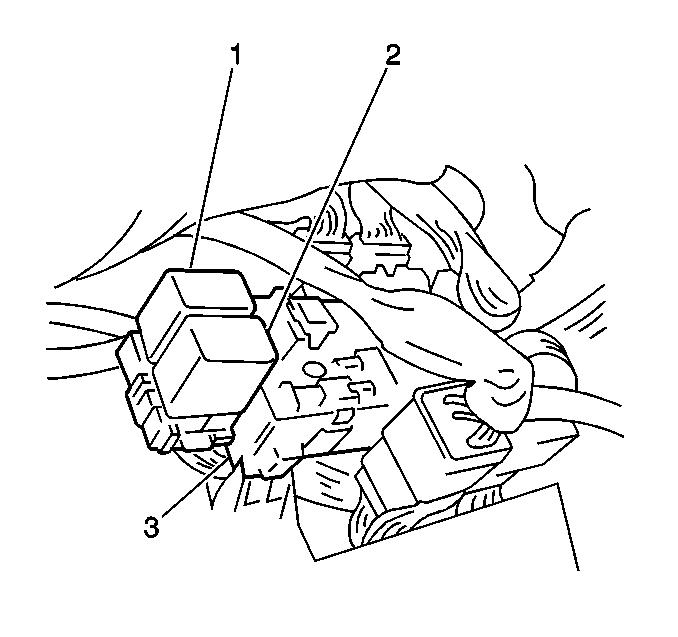Idle Air Control (IAC) Valve

The idle air control (IAC) valve is attached to the throttle body with two bolts. The IAC valve enables the powertrain control module (PCM) to easily control engine idle speed by precisely metering the engine's air intake at closed throttle. The IAC valve opens and closes the idle air (bypass) passage according to signals from the PCM. The PCM determines the correct engine idle speed by using input from various sensors and switches in order to assess engine status and requirements.
Operation
The powertrain control module (PCM) uses the IAC valve in order to control engine idle speed. The IAC valve is a stepper motor design. The IAC valve opens and closes the idle air (bypass) passage with a plunger. The plunger moves in and out in response to the rotation of the IAC motor. The idle air passage allows air to enter the engine without passing over the throttle valve.
The PCM commands the plunger of the IAC valve to retract, in order to increase the idle air passage opening. A larger idle air passage opening allows more air to enter the intake, resulting in an increase in engine speed.
Engine Idle Speed Control
The engine idle speed is controlled by the powertrain control module (PCM) through the idle air control (IAC) valve. There are several reasons for idle speed control:
- Maintain the engine idle speed at the specified RPM at all times. The engine idle speed can vary due to any of the following reasons:
- Improve the starting performance of the engine.
- Improve the driveability of the engine during warm up.
- Compensate for the change in the air/fuel mixture ratio when decelerating (dash-pot effect).
| • | A change in the load applied to engine (when the rear defogger is operating, the automatic transaxle is shifted to R, D, 2 or L ranges, the A/C is turned ON, the headlights or stop lights are turned ON, etc.). |
| • | A change in the atmospheric pressure. |
| • | A change in the engine's condition over time. |
Main Relay
The main relay provides power to most of the engine control system components. The main relay is controlled by the powertrain control module (PCM). The PCM provides an electrical ground for the coil of the main relay, anytime the ignition switch is ON.
The main relay is located in the junction box, next to the fuel pump relay, behind the LH side kick panel of the passenger compartment.
Fuel Pump Relay

The fuel pump relay provides power to the electric fuel pump. The fuel pump relay is controlled by the powertrain control module (PCM). The PCM provides an electrical ground for the coil of the fuel pump relay, which causes the contacts in the relay to close. When the ignition switch is turned to the START position, the circuit opening relay will be energized for 3 seconds in order to allow the fuel pump to operate and pressurize the system. The fuel pump will continue to operate if the PCM receives an ignition reference signal while the engine is cranking or the engine is started and running. The fuel pump operates as long as the fuel pump relay is energized by the PCM. When the fuel pump relay is de-energized, the fuel pump will stop operating.
The fuel pump relay (2) is located in the junction box (3), next to the main relay (1), behind the LH side kick panel of the passenger compartment.
A/C Condenser Fan Relay
The A/C condenser fan motor, is operated by the A/C condenser fan relay, which is controlled by the PCM. The PCM turns ON the A/C condenser fan relay under any of the following conditions:
| • | The A/C system is operating. |
| • | ECT sensor indicates that the engine coolant temperature is more than 110°C (230°F). |
| • | The PCM detects an ECT sensor malfunction. |
Malfunction Indicator Lamp (MIL)
The malfunction indicator lamp (MIL) is located in the instrument panel gauge cluster. The MIL is illuminated by the powertrain control module (PCM) in order to notify the vehicle operator of an engine control system malfunction.
The MIL receives ignition positive voltage anytime the ignition is ON. The PCM illuminates the MIL by providing a ground for the MIL circuit. The MIL should be illuminated whenever the ignition is ON and the engine is not running. Illuminating the MIL whenever the ignition is ON and the engine is not running provides a check of the bulb and circuit. The PCM will turn OFF the MIL once the engine is started or running if there are no engine control system malfunctions.
Many of the conditions for illuminating and extinguishing of the MIL are performed by the PCM in accordance with OBD II regulations. For more information on the MIL function, review the Powertrain Control Module (PCM) Description (Common OBD II Systems).
The Powertrain On-Board Diagnostic (OBD) System Check guides the user to the correct diagnosis and repair of the MIL circuit.
A/C Cutout Signal
The powertrain control module (PCM) can prevent the engagement of the A/C compressor clutch through the A/C compressor control module. The PCM provides a ground signal to the A/C compressor control module that enables the A/C compressor control module to operate the A/C compressor clutch relay. The PCM allows the A/C compressor clutch to operate at customer request except during any of the following conditions:
| • | The PCM did not receive the A/C request input (idle-up signal) from the A/C compressor control module. |
| • | Wide open throttle (WOT) engine operation. |
| • | ECT sensor indicates that the engine coolant temperature is more than 110°C (230°F). |
| • | Engine speed is less than 500 RPM or more than 6,500 RPM. |
